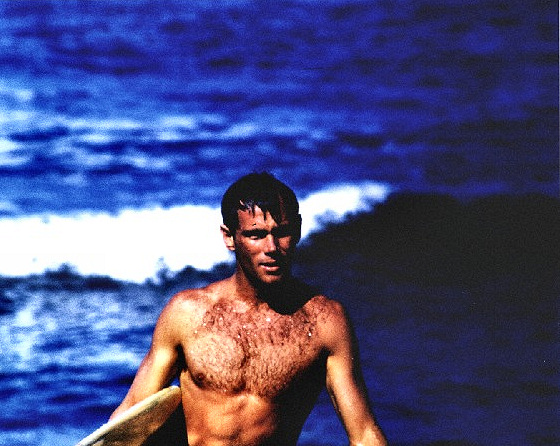Philip Edwards was the first surfer to ride the Banzai Pipeline in Hawaii back in 1961. Phil, also known as "The Guayule Kid," was born on June 10, 1938, in Long Beach, California.
Before completing ten years of age, Phil Edwards was already feeling the attraction of water, ocean, and waves.
In those days, California was the Mecca of international surfing. The US West Coast had everything for everyone: waves of all types, vivid surf culture, and an emerging surf industry.
In Dana Point, California, surfers tried to impress spectators with serious wave-riding stunts at the famous surf break of Killer Dana, a spot for experienced watermen.
Killer Dana was "the" surf spot where you could become the most influential surfer of all time in a few days.
In 1953, Phil Edwards was ready to challenge Killer Dana.
The moment he caught and completed the first wave, something changed forever in the sport of surfing.
Phil was 15 years old and had just cut back a wave.
"This was Phil Edwards' first attack on Killer Dana. Jim 'Burrhead' Drever took Edwards out with him and kept an eye on him.
As the story goes, they took off on a wave together. Burrhead yelled, 'Head for the green!' when Edwards cut back toward the curl", explains Nat Young.
"He just cut back, flipped another turn, ran to the nose, and caught up with the astonished Burrhead.
The word soon spread, and Phil Edwards was the new standard to judge by."
A Stoked Feeling
Phil Edwards describes the entire feeling in a very emotional way.
"On the day of Killer Dana, swimming up the cresting waves and looking into the comb of water hissing along the top, I was aware of all these things."
"Still, a special kind of mood sets in - a feeling which forms like a knot on the inside of your stomach."
"In your mind's eye, you know how the scene must look from the beach. A small figure scratching up the side of a towering wave, making it to the top and going over the other side, paddling for the next one."
"And suddenly, an insulated, quiet confidence begins to form inside. You know you can do it. It is as if you were, momentarily, standing outside yourself, watching all this, critically, unemotionally, and feeling, vicariously, the terrible, tensed, stoked feeling building up in the surfer!"
Those were the Miki Dora and Leroy Grannis years when surfing was a matter of style, flow, and classicism.
By the end of the 1950s, Phil Edwards was shaping very good surfboards, and Hawaii had been discovered and surfed.
Not "all" Hawaii. Sunset, Waimea, and Makaha had big surfing days. Yes, it's true.
But what about that particular and impossible Pipeline wave?
He had to give it a go. He felt it was possible to take off at Pipe despite the unfavorable surfboard shapes and global fear.
Legendary surf filmmaker Bruce Brown captured the first ride ever at Pipe when Phil took off on a six-foot wave and successfully surfed it until the end.
The historic moment can be seen in the movie "Surfing Hollow Days."
The next day, he rode it again, along with Dave Willingham. Phil Edwards made history and brought an endless team of fellow surfers to the world's most famous surf spot.
He collected trophies, titles, and honors; he sold his signature surfboards and taught the surfing community.
Edwards starred in surf movies and was forever enshrined in the history of surfing.
